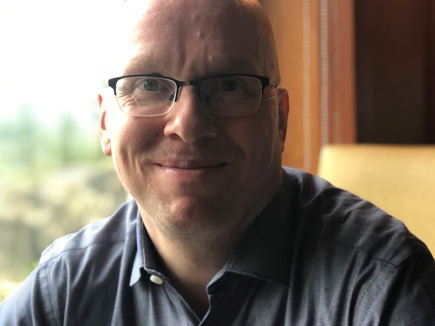Joerg Gablonsky
The Boeing Company
Seattle, Washington, U.S.
Department: Applied Math Group, Boeing Research and Technology (BR&T)
Education: Master’s degree Math and Business, University of Trier, Germany, Ph.D. Applied Mathematics, North Carolina State University
Career stage: Mid

What do you do?
I am lead for a group of mathematicians developing and supporting simulation-based optimization methods, and chair of the Boeing Enterprise High-Performance Computing (HPC) Council (EHPCC). As a mathematician I develop new algorithms, implement them in Python, and write tests. As lead I provide guidance to the team, develop our roadmaps, and decide with the team what ideas to pursue. I also meet with our internal users to provide training and assistance and use that to guide our roadmaps to provide unique capabilities that solve aviation optimization challenges. As chair of the EHPCC I coordinate Boeing’s HPC activities. This involves working with engineering groups across Boeing to understand their needs and building the business case for continued funding. Boeing is transitioning some of its HPC usage to cloud, and I work with IT on all aspects of this.
What types of skills do you use?
The mathematical skills I developed in school and expanded while working are at the core of what I do. Communicating with engineers is a key skill, as is communicating with non-technical people and other people outside the field. Condensing information to what is critical for the audience is also important, as is empathy for the people you are working with. Some of my work involves big changes, which can be challenging; listening to stakeholders and addressing concerns directly is key to success.
How are applied mathematics and/or computational science important to what you do?
Since applied mathematics is part of my job every day, it is critical.
What are the pros and/or cons of your profession/job?
Pro: I love the flexibility of my job and the ability to solve interesting challenges. I get to create positive change for the large engineering community I support. Sometimes I get to directly interact with our products.
Con: Sometimes you must deal with bureaucracy slowing things down.
Does your job offer flexibility?
Yes, I changed roles multiple times during my career, and can work virtually a large percentage of the time.
What career path did you take to your current position?
I started as an applied mathematician in the math group, working on design space exploration methods and their applications. I became lead of research projects in HPC which led to transitioning to Boeing Information Technology (IT) to help stand up the Enterprise HPC Service. This involved consolidating HPC systems from across the enterprise into a single service. I traveled across the United States to understand requirements from all stakeholders that were being asked to transition to the centralized service, which led to a successful consolidation.
I helped stand up Boeing’s Digital Transformation Environment (DTE), transforming the way Boeing develops and delivers software. This included development of the business case and being part of the leadership team. After a short time in Boeing IT Enterprise Architecture organization, I returned to the Applied Math group for my current role. In 2019 I was recognized as a Boeing Technical Fellow.
Was your career path well planned or a result of taking opportunities as they arose?
It was very much driven by taking on opportunities.
What advice would you give to someone pursuing a similar degree or profession?
Learn to program in both interpretive and compiled programming languages (Python, C, C++, or Fortran), and use a version control system like Git. Take classes outside your domain, maybe even business classes.
Has SIAM played a role in helping you build your career?
I became a SIAM member in grad school, which allowed me to build a network. I have attended many SIAM conferences, and I am involved with committees.
Salary
$150K–$250K
Stay Up-to-Date with Email Alerts
Sign up for our monthly newsletter and emails about other topics of your choosing.

